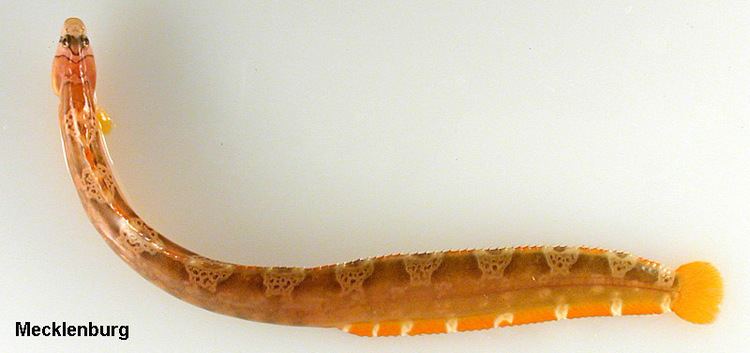Kingdom Animalia Superclass Osteichthyes Infraclass Teleostei Phylum Chordata Rank Species | Subphylum Vertebrata Class Actinopterygii Superorder Acanthopterygii Genus Pholis Order Perciformes | |
 | ||
Similar Pholis, Liparis fabricii, Arctic alligatorfish, Perciformes, Crescent gunnel | ||
The Banded Gunnel (Pholis fasciata) is the only species of gunnel that lives in the Arctic Ocean. Very little is known about its life cycle or reproduction.
Contents
Physical characteristics
The Banded Gunnel reaches about 12 inches (30 cm) long and has an elongated body, somewhat like an eel. Its dorsal fin has small spikes and its skin is covered in tiny scales. Its color ranges from a bright reddish orange to greenish yellow. It has thin, dark red bands reaching across its belly, and white blotches with black spots on its back and dorsal fin. An olive-green and black stripe extends down from the top of the head down through the eyes and down the cheeks. The pectoral fins small (less than half the length of the head), and are fan-shaped. The pelvic fins are either tiny or absent.
Habitat
The Banded Gunnel lives in arctic and subarctic waters in the Arctic Ocean, near Southern Labrador and Western Greenland, and in the North Pacific Ocean. It lives in the benthic zone, in sand, broken shells, and gravel. The temperature of the water usually ranges from 5-10 degrees Celsius.
Diet
The Banded Gunnel feeds on small crustaceans such as crabs, lobsters, and shrimp.
Predators
The Banded Gunnel is fed upon by sculpins, cods, and occasionally sea birds.
